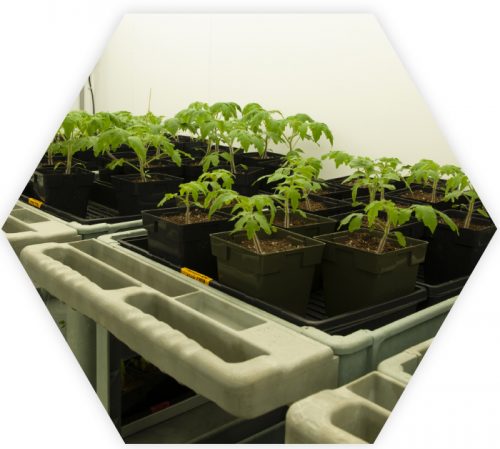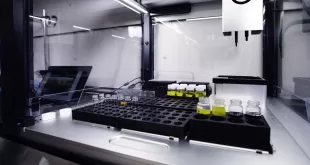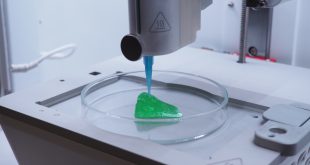By Jana Manolakos
Climate change can feel too remote and too unreal, its urgency lost in everyday lives. But at Western University’s Biotron, it becomes tangible. In this unique, state-of-the-art facility, scientists are making important connections as they investigate the mechanisms of global environmental transformation.
In Canada at this moment, a small group of researchers is probing life in the coastal estuaries of British Columbia. Others are analyzing soil temperatures in the tundra of the Northwest Territories and still more are measuring carbon dioxide levels in the boreal forests of Newfoundland. Seeking to understand the potentially catastrophic impacts of climate change, their collective laboratory is the natural world – which in Canada is defined by 22 eco-zones spanning 9.9 million square kilometres.
Such great distances make it hard for scientists to draw meaningful lines between studies on climate change, a challenge that is further compounded by the length of time, often decades, it can take to observe these effects. The cost of setting up controlled experiments in the outdoors can also add up – as much as several million dollars.
Not so at the Biotron Experimental Climate Change Research Centre (Biotron), a hub of leading-edge research in London, ON. Nestled among academic buildings at Western University, this five-storey facility houses multiple controlled-environment laboratories and state-of-the-art analytical and microscopy units.
Here, researchers can observe the complexities of climactic conditions under one roof, and offer tangible evidence of what’s happening on the planet, says the Biotron’s Scientific Director, Dr. Brian Branfireun, Canada Research Chair in Environment and Sustainability and an international expert in the field of watershed hydrology, biogeochemistry and the environmental cycling of mercury.
“We can grow entire small forests under elevated temperatures and increased carbon dioxide and do so in a controlled experimental way to identify the primary effects of climate change on ecosystems. It enables researchers to conduct laboratory experiments on a scale previously unimaginable to study the impacts of climate change and extreme environments on water, soils, plants, microorganisms and insects.”
The significance is not lost on Branfireun’s close colleague, Dr. Danielle Way, who is leading a team at the Biotron studying the interactions of carbon dioxide and rising temperatures on plant species, particularly poplar and tamarack trees found in boreal forests.
“There are many experiments in the field looking at just carbon dioxide or just global warming, but to be able to observe the two together – which is a reflection of what is actually happening environmentally, is very difficult and expensive, costing multiple millions and taking decades to set up,” she says.
It’s a sunny spring morning as Way sets out for a 10-minute ride to work at Western. Taking her bicycle upstairs to her second-floor office in the Biology department, she leans it against the wall adjacent to her desk, overflowing with student papers, lecture schedules, grant applications and plans for her own research. Once settled in, she decides to check on the students in her lab within the Biotron. She heads across a causeway that connects the department to the four-storey glass enclosed foyer of the facility, where a few students have sought refuge on sun-drenched benches in the airy and serene space.
As the brainchild of Dr. Norman Hüner, who was the principal investigator of the Canada Foundation for Innovation proposal that resulted in funding for the Biotron and its first Scientific Director, the facility opened to both local and international researchers in 2008. Additional funding came from the Ontario Research Fund and through partnerships among the universities of Western and Guelph, Ministry of Agriculture and Agri-Food, and private donors. Today it houses three major services: environmental chambers – for insects, plants and a variety of biomes or ecological communities; an acclaimed state-of-the-art microscopy unit; and a leading-edge analytical laboratory.
Here researchers are seeking answers to global warming management, plants as bioreactors for molecular farming, impacts of herbicides and pesticides on food chains, acclimation and sustainable plant productivity, insect pest and vector control, and reducing the environmental impact of metals.
“At the core of the Biotron are dozens and dozens of spaces or chambers – from mini-fridge sized incubators for microbiology to large greenhouses on the roof where we can regulate temperatures and carbon dioxide and simulate any future climate that we can imagine,” says Branfireun.
The Biotron boasts one of the largest standalone environmental chambers in the world, built by BioChambers Inc. Its size and distinctive construction allow it to simulate virtually any climate in the world. It has the unique ability to maintain different temperatures in an upper and lower zone, permitting the simulation of variables above and below ground conditions such as those found in permafrost in Canada’s north. These unique features have enabled research that cannot be done anywhere else in Canada.
On the first floor, Way enters her dry lab where a student is measuring a tamarack specimen harvested earlier that day from the rooftop greenhouses, and is uploading data onto computers. Way passes through and enters the adjacent wet lab, putting on a pair of safety goggles to protect against splashes. In addition to the typical equipment that one would expect, this particular one includes special grinders that enable chemical assays for such things as plant carbohydrate content and leaf pigmentation, and a Thermotron temperature stress chamber used to test heat tolerance.
Branfireun believes that while there are many important laboratories studying the effects of environmental change across Canada, none offer the unique diversity of spaces seen at the Biotron. “For example, we have an insect module that is CFIA certified,” says Branfireun. “It is Level One certified so people can work with pest insects and explore environment-plant-insect interactions in a sophisticated, cost-efficient space.”
For the most part, researchers at the Biotron are freed from some of the management issues they might contend with working in their own labs. For example, those that are studying insects don’t need to worry about maintaining the facilities to prepare diets for animals because the space offers a large dietary prep area for users, basically a kitchen, for up to a dozen researchers to use. The space includes an autoclave, cookers and fridges, sinks and counter spaces that allow researchers to prepare a mix of insect diets, from meal to egg-based menus.
As a research platform, the Biotron enables scientists from different disciplines to share their studies and skills and collaborate on climate change issues, says Branfireun.

Way has been talking to Dr. Jeremy McNeil, a former Scientific Director of the Biotron and acclaimed insect expert at Western, whose laboratory is just down the hall. They’ve been discussing the work of one of Way’s students who is studying the impact of low-CO2 concentrations on plants, simulating the environment as it existed 15,000 years ago and how that affects plants’ abilities to defend against herbivores. There may be an opportunity down the road to link this work to McNeil’s insect research to see how well herbivores perform when fed plants grown under prehistoric glacial conditions.
“We are interested in how climate change affects plant communities especially in wetlands – and how the change in moisture in plants affects invertebrates, microbiological processes and subsequently water chemistry. You can draw lines connecting all those parts of an ecosystem which is why the experimental setting here is so valuable,” says Branfireun.
Several people at the Biotron are working with the Canadian Forest Service (Natural Resources Canada) looking at the cold tolerance of pest insects related to forests and the effects of climate change on carbon in Canadian ecosystems. “It’s a laboratory that doesn’t have one team working on the same problem, but rather a diverse group of people working on a wide range of different problems with varying degrees of overlapping space.”
The Biotron is also a “proof of concept space” suggests Branfireun, enabling foundational studies to occur that lend greater certainty for more expensive studies down the road.
In addition to several research partnerships in Canada with different levels of government and with First Nations, academic staff like Branfireun and Way collaborate internationally: working on the Spruce-Peatland Response Under Climate and Environmental Change Experiment (SPRUCE) in Minnesota; with several Swedish universities looking at boreal trees; and in Australia, the United Kingdom, and, Chile where a study is exploring the impact of increased CO2 on Antarctica’s only two known plant species, besides moss.
Way heads up to the enormous rooftop greenhouses. In their ante-chamber, she puts on a fresh lab coat and paper booties, to prevent contaminants from entering the strictly controlled space. There are six glass houses offering Level 1 containment, with directional inward flowing non-recycled air, that prevents outside airborne contaminants from spoiling controlled growth experiments. Constructed with glass walls, the spaces allow natural sunlight to flood in, but are also equipped with an automatic shading system that can simulate different times of day and season. An array of micro-sensors and computer infrastructure enable strict analysis and control over such factors as CO2.
Like those in the greenhouses, the majority of the 70 environmental chambers at the Biotron are embedded with computers that control environmental conditions through a variety of system programs, similar to those found in a smart home, but much more advanced. While there is one network overall, there are different systems that operate independently and can be programmed remotely.
“For example,” says Branfireun, “The rooftop greenhouse systems are independent of the walk-in growth chambers in the insect unit. If something goes wrong with any of the chambers that are in operation, we know immediately and can respond to an equipment failure very quickly even if nobody is on-site.”
The Biotron houses an impressive microscopy suite with confocal, digital light and fluorescence, transmission and scanning electron microscopy technology. “The unit also has an expert imaging and electron microscopy specialists to help researchers manipulate images for optimal results.”
In the analytical unit, there are state-of-the-art mercury analyzers, manufactured by Tekran Instruments Inc., that focus on environmental sample analysis primarily on trace metal. Other equipment offers inductively coupled plasma mass spectrometry (Agilent ICP-MS), augmented with high-performance chromatography and the capacity to study mercury isotopes.
The analysis unit is both ISO and CALA accredited. “It produces reliable data for other researchers, universities, governments and private sector companies,” says Branfireun.
There aren’t a lot of ISO accredited facilities out there doing analysis for ultra trace mercury or arsenic, so the revenue that comes in from this type of work is helpful in supporting the Biotron’s student training program.
“We train dozens of students, undergraduates and graduates, co-op students and interns every year,” he says. “Graduate students have the opportunity to operate within the standards set by the ISO and cannot run anything until they receive ISO approval – which gives them the chance to learn how to generate the best data, among other research skills.”
Even after six years at the facility, Way still gets excited in the glass houses, but ultimately it’s the people and the community, “the excellent group of researchers coming together to work and collaborate,” she says, which give her some of the greatest satisfaction. Before heading back to her department to spend the afternoon writing papers, Way meets with a few students to discuss the set-up for an upcoming experiment. They have determined the environmental conditions needed for the study and will provide the details to the Biotron’s support staff, who will adjust the equipment for the ideal conditions within which to run the study.
“The future now for us lies in reinventing the Biotron from a core research platform into a bigger enterprise,” says Branfireun. “It’s one thing to have the space as we do now for experiments. But we also need to operate in an intellectual space that supports the research mission.”
That’s the next step, he says: to form an official centre of research excellence, an intellectual home for the Biotron, with increased exposure to attract graduate students, post doctoral fellows and researchers from other parts of the world.
Photos Courtesy of Western University
 BioLab Business Magazine Together, we reach farther into the Canadian Science community
BioLab Business Magazine Together, we reach farther into the Canadian Science community





